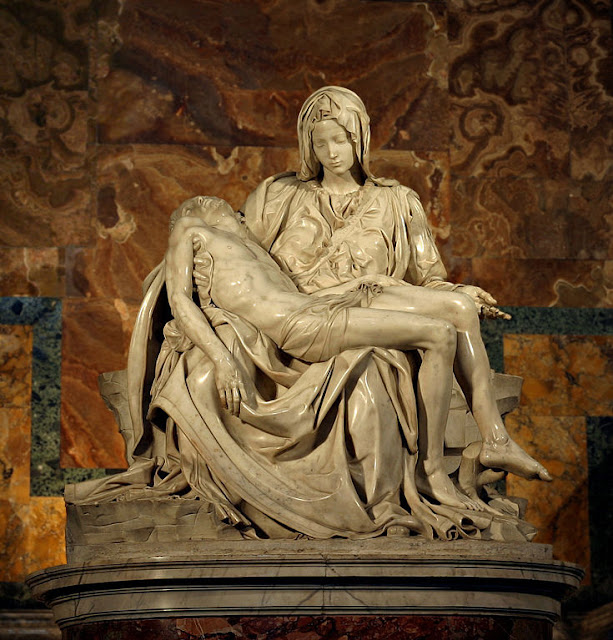Walking Through Divine Worship: the Gospel Procession
- At the conclusion of the Epistle as the Alleluia or Tract begins, the MC transfers the Missal (open to the Creed) from the Epistle Side to the Gospel Side. All clergy have removed their birettas at the start of the Alleluia or Tract.
- The torchbearers and crucifer, already in motion to retrieve their respective items, then station themselves in the centre of the pavement (facing the altar) awaiting the MC (or Instituted Acolyte.
- The MC or Acolyte retrieves the Book of the Gospels - i.e., the Evangeliary - and carries the Book of the Gospels in the procession. The Book of the Gospels is held with the page edges to the left.
- The Thurifer carrying the thurible in his left hand (and Boat Bearer) approach the sedilia for the preparation of the incense.
- Once the incense is blessed and the thurible readied, the Thurifer transfers the thurible to his right hand and the Boat Bearer returns to his chair; and
- the Thurifer joins the assembled procession, taking the lead of the procession. If a bishop is present, he receives his miter and crozier.
- If a deacon is to read the Gospel, he presents himself to the Celebrant (priest or bishop) who blesses him with the appointed prayer.
- The deacon or Gospeler, joins the procession at the centre of the pavement.
- Then, all turning with the Gospeler, the assembled ministers process out of the sanctuary into the nave to a suitable distance, typically the third pew. If the Gospeler is not the Celebrant, the Celebrant (or bishop) waits at the centre of the sanctuary, remains standing on the footpace, centre, facing toward the Book of the Gospels, and waits there until the procession returns.
- The Thurifer, before he reaches the first pew (just outside the gate or in the transept or crossing), steps to the right to allow the procession to pass, then following near the Gospeler.
- Once the procession reaches the designated place, the torchbearers and crucifer, and the MC (carrying the Evangeliary), turn to face the altar.
- The Gospeler opens the Book of the Gospels, which is cradled by the MC.
- The Gospeler intones the introduction - "The Lord be with you." The congregation, turning toward the Evangeliary, responds - "And with thy spirit." The Gospeler continues: "A reading from the Holy Gospel according to Saint [N]." The Gospeler first signs the Book as the congregation makes the customary Triple Sign of the Cross and all reply, while making a moderate bow (excepting servers carrying objects), "Glory be to thee, O Lord."
- The Gospeler signs himself with the Triple Sign, then incenses (with three double swings - centre, left, right) the Book of the Gospels. Thereafter, he hands the thurible to the Thurifer who, standing behind the Gospeler between him and the sanctuary, maintains a gentle swing of the thurible across the aisle.
- The Gospeler chants the Gospel.
- At the conclusion of the Gospel, the Gospeler says: "The Gospel of the Lord." To which the people reply saying, and with a moderate bow: "Praise be to thee, O Christ." The Gospeler venerates the Book with a kiss.
- The procession returns to the sanctuary and stops in place to await the incensation of the Celebrant. The procession, led by the thurifer, stops in the middle of the pavement. The torchbearers and crucifer return the candles and crucifix to their respective places before taking their seats.
- The Thurifer, facing toward the altar) then incenses (with three double swings) the Celebrant (facing the Thurifer) who is waiting at the centre of pavement.
- The Celebrant, if not the Gospeler, then kisses the Book of the Gospels and either returns to his chair or proceeds to give the homily from the pulpit.
- The Book of Gospels is reposed on its stand on the credence table or in its niche or another worthy place.
The nave - located to the liturgical West of the altar - represents the realm of the gentiles, those to whom the Church is directed to go to preach the Gospel and to baptize in the Name of the Father and of the Son and of the Holy Ghost.
Sources
OLW Servers
Ritual Notes (1894)
Ritual Notes 11th Edition
Sources
OLW Servers
Ritual Notes (1894)
Ritual Notes 11th Edition

.jpg)





Comments
Post a Comment
Your comments will be appreciated and posted if 1) they are on topic and 2) preserve decorum.
Stand by your word.